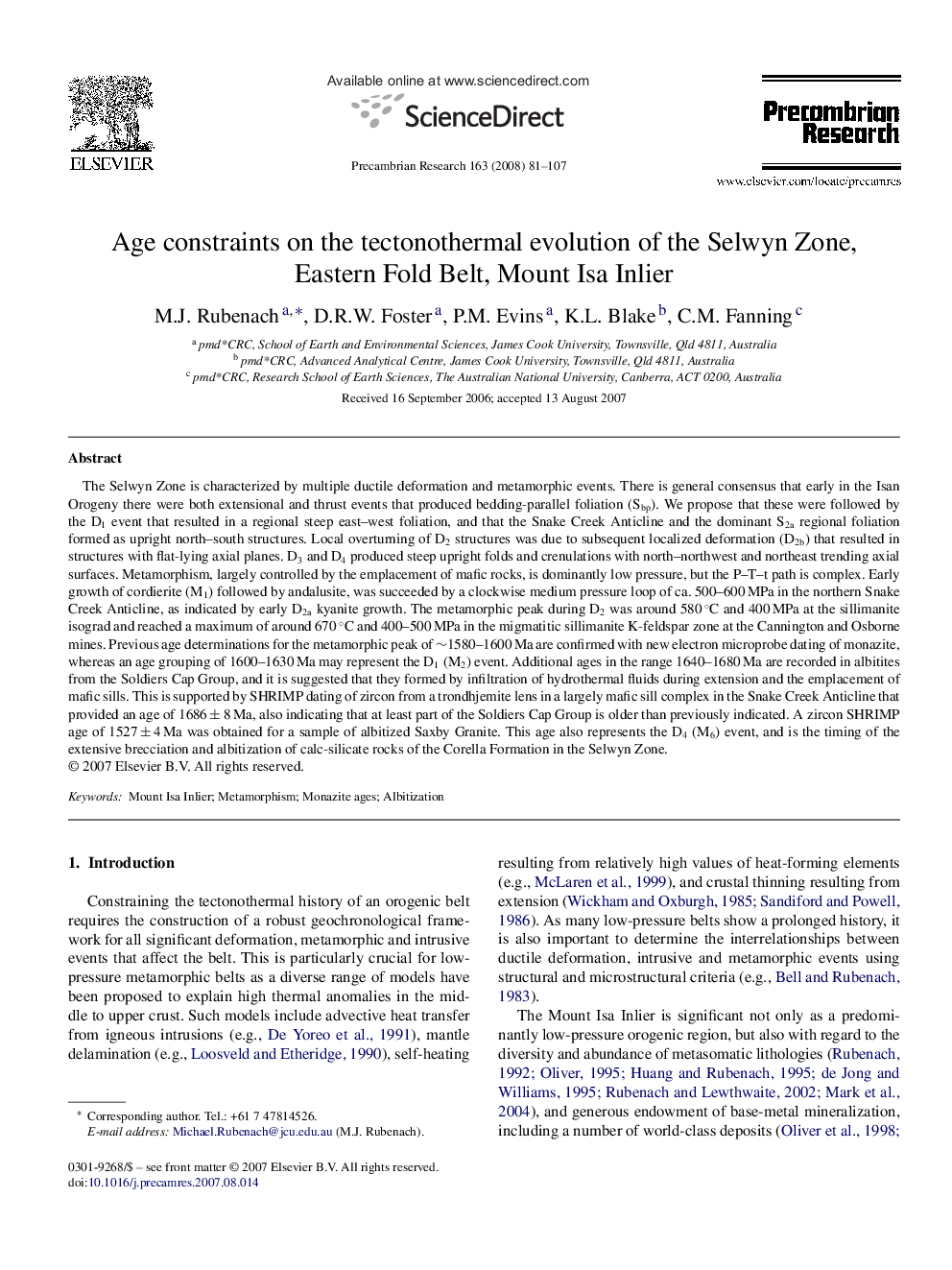| کد مقاله | کد نشریه | سال انتشار | مقاله انگلیسی | نسخه تمام متن |
|---|---|---|---|---|
| 4724379 | 1639704 | 2008 | 27 صفحه PDF | دانلود رایگان |

The Selwyn Zone is characterized by multiple ductile deformation and metamorphic events. There is general consensus that early in the Isan Orogeny there were both extensional and thrust events that produced bedding-parallel foliation (Sbp). We propose that these were followed by the D1 event that resulted in a regional steep east–west foliation, and that the Snake Creek Anticline and the dominant S2a regional foliation formed as upright north–south structures. Local overturning of D2 structures was due to subsequent localized deformation (D2b) that resulted in structures with flat-lying axial planes. D3 and D4 produced steep upright folds and crenulations with north–northwest and northeast trending axial surfaces. Metamorphism, largely controlled by the emplacement of mafic rocks, is dominantly low pressure, but the P–T–t path is complex. Early growth of cordierite (M1) followed by andalusite, was succeeded by a clockwise medium pressure loop of ca. 500–600 MPa in the northern Snake Creek Anticline, as indicated by early D2a kyanite growth. The metamorphic peak during D2 was around 580 °C and 400 MPa at the sillimanite isograd and reached a maximum of around 670 °C and 400–500 MPa in the migmatitic sillimanite K-feldspar zone at the Cannington and Osborne mines. Previous age determinations for the metamorphic peak of ∼1580–1600 Ma are confirmed with new electron microprobe dating of monazite, whereas an age grouping of 1600–1630 Ma may represent the D1 (M2) event. Additional ages in the range 1640–1680 Ma are recorded in albitites from the Soldiers Cap Group, and it is suggested that they formed by infiltration of hydrothermal fluids during extension and the emplacement of mafic sills. This is supported by SHRIMP dating of zircon from a trondhjemite lens in a largely mafic sill complex in the Snake Creek Anticline that provided an age of 1686 ± 8 Ma, also indicating that at least part of the Soldiers Cap Group is older than previously indicated. A zircon SHRIMP age of 1527 ± 4 Ma was obtained for a sample of albitized Saxby Granite. This age also represents the D4 (M6) event, and is the timing of the extensive brecciation and albitization of calc-silicate rocks of the Corella Formation in the Selwyn Zone.
Journal: Precambrian Research - Volume 163, Issues 1–2, 20 May 2008, Pages 81–107